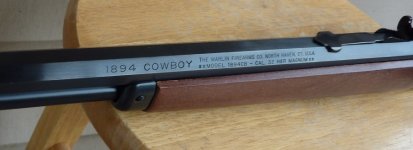Case fatigue
Give the 40-45,000 psi pressures that case is put under, it would not be surprising that case life is shorter than .38 or even .357 case life.
Lengthwise cracking is typically a sign of aging brass with multiple resizing steps in reloading. When fired, the brass bulges outward against the chamber walls to contain the pressure. After firing the brass relaxes a bit. But it is now oversized from factory specs. We resize the brass which forces it back into the correct dimensions. These repeated steps work harden the brass until it gets hard and brittle. Then the weakest point fails - a rupture in the form of a crack.
In the .327 federal, it's diameter is going to be the same as that for .32 Long and .32 H&R, in order that the chamber specs are consistent. That means...
.337" - .32 caliber cartridge diameter.
.3412" - .32 chamber diameter
.0042" - .32 cartridge expansion diameter
This means we're squeezing a .3412" case back down to .337" in each resizing step. Just like airliners that pressurize and depressurize, repeated cycling of the metal causes metal fatigue cracks can form.
Brass is annealed when originally formed to make the brass softer and workable when forming the cartridge. Rifle shooters may anneal the case mouths of their rifle cartridges after a few firings, especially if the case mouth seems not to keep tension against the bullet.
The main advantages of nickel cases center around it's lubricity for easier extraction and greater corrosion resistance, especially in leather belt loops. Nickel is less ductile (more brittle) than brass and resists changes in shape. The nickel forms a "shell" around the brass and when resizing causes the nickel to either separate from the brass or work harden, it creates a tiny weak spot. The case resists expansion in all directions equally except where that weak spot is. That one spot tends to expand a little faster and easier.
When resizing your brass, be sure that both the brass and resizing die are clean. This is especially true of you use any case lubricant which can carry fouling and grit into the resizing die. Inspect resized cartridges for lengthwise scratches which can shorten case life (especially at 45,000 psi). Worst case is that some grit can scratch the die itself and ruin it.
Measure your once-fired brass. Since revolver chambers are sometimes cut all at once, there may be slight variances between chambers. One might be slightly loose compared to the others (.3413 instead of .3412). Expect case life for those cartridges may be shorter.


